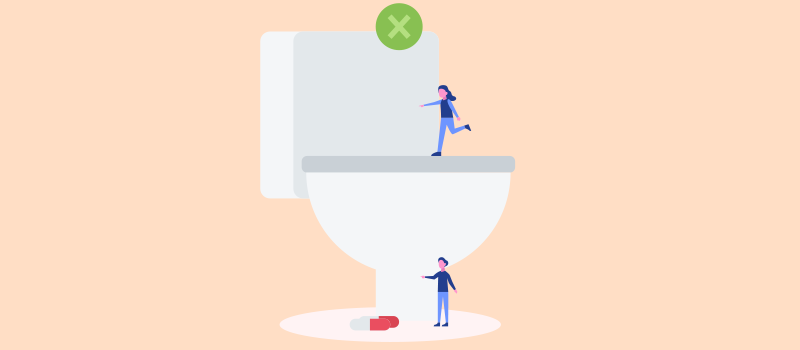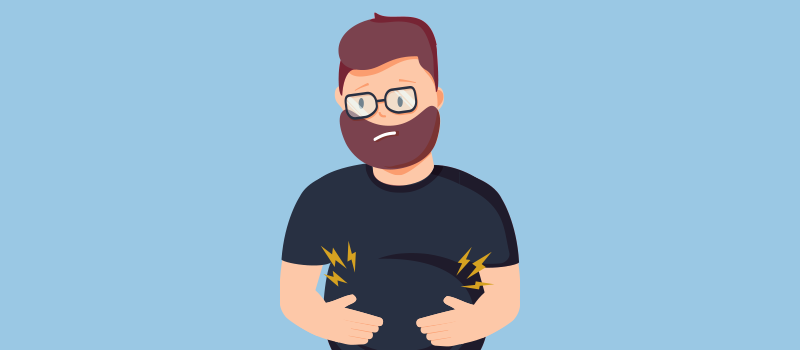What’s the Buzz
The Bee Healthy Blog
What is Gallstone Pancreatitis, and Can It Be Prevented?

Gallstone pancreatitis is a potentially life-threatening condition that requires hospitalization. The occurrence of gallstone pancreatitis has been increasing in recent years due to the increasing prevalence of obesity, a risk factor for gallstone formation.
Please continue reading to learn more about gallstone pancreatitis, including the causes, symptoms, diagnosis, treatment, and prevention.
Gallbladder and Pancreas Anatomy: A Brief Overview
To understand gallstone pancreatitis, we need to understand the organs involved in this condition.
Gallbladder
This is a small pear-shaped organ in the right upper part of the abdomen, located just below the liver. The gallbladder is a reservoir for a digestive fluid called bile that is released into the small intestine to help digest food.
Common Bile Duct
The common bile duct is a tube that carries bile from the gallbladder and liver to the small intestine. It forms when ducts carrying digestive juices from the liver and gallbladder combine.
Pancreas
The pancreas is a small (approximately 6-inch) abdominal organ that sits behind the stomach. It has two key functions. The pancreas produces pancreatic enzymes that play an important role in the digestive process. The second function of the pancreas is insulin production. Insulin is a hormone that helps control blood sugar.
Pancreatic Duct
This duct carries digestive enzymes from the pancreas to the small intestine. It joins the common bile duct before emptying into the small intestine.
Gallstones
These are abnormal, hard, pebble-like masses made up of bile pigments, cholesterol, and calcium. Gallstones can form in the gallbladder and bile duct. They are very common and affect 10-15% of people in the US. Gallstones are the leading cause of acute pancreatitis.
What is acute pancreatitis? How is it different from chronic pancreatitis?
Pancreatitis is a disease in which there is inflammation of the pancreas. There are two forms of pancreatitis — acute and chronic pancreatitis. Acute pancreatitis develops suddenly and lasts for a short time. Chronic pancreatitis consists of ongoing inflammation that can last for many months. Acute pancreatitis can be a risk factor for chronic pancreatitis.
What is gallstone pancreatitis?
Gallstone pancreatitis is a type of acute pancreatitis. It is an inflammation of the pancreas that develops when a gallstone travels from the gallbladder and blocks the opening of the common bile duct into the small intestine. Sometimes a gallstone can travel up your pancreatic duct and block your pancreatic duct. This causes digestive juices to back up into the bile duct and pancreatic duct, causing inflammation. That’s why the condition is called gallstone pancreatitis. It can be very painful and potentially fatal without treatment.
What are gallstone pancreatitis symptoms?
The most common symptom of gallstone pancreatitis is severe belly pain. Other symptoms can include fever, chills, nausea, pain that is sharp and squeezing in the left upper belly that can radiate to the shoulder or chest, and vomiting. You can also develop yellowish eyes and skin (jaundice).
How is gallstone pancreatitis diagnosed?
Doctors diagnose gallstone pancreatitis using blood tests to check if there is inflammation in the pancreas. They also use body scans (imaging studies) like ultrasound, CT scan, or MRI scans to see whether a gallstone is stuck in the pancreatic duct and assess the severity of pancreatitis.
You should seek immediate medical help if you have symptoms like severe abdominal pain accompanied by nausea, vomiting, chills, fever, and yellow color of eyes and skin (jaundice).
How is gallstone pancreatitis treated?
Treatment for gallstone pancreatitis usually requires hospitalization. For mild pancreatitis, treatment typically consists of nothing by mouth for a few days. During this time, doctors may give IV fluids and medications to treat other symptoms like pain and nausea. This can help the gallstone pass and lead to resolving the gallstone pancreatitis.
In more severe cases, doctors may recommend surgery to have the gallstone removed. This can be done through a procedure called ERCP (endoscopic retrograde cholangiopancreatography), which is done using an instrument called an endoscope.
In some cases, doctors may recommend having the gallbladder removed surgically after the gallstone pancreatitis has resolved to reduce the risk of developing this condition again.
What are the complications of gallstone pancreatitis?
If left untreated, gallstone pancreatitis can lead to serious health complications in the liver, gallbladder, and pancreas, including an infection called cholangitis. The backing up of digestive fluids into the pancreas can lead to death of the pancreatic tissue; a condition called pancreatic necrosis. Gallstone pancreatitis can ultimately be fatal without the proper treatment.
How to prevent gallstone pancreatitis?
You cannot entirely prevent gallstone pancreatitis because you cannot fully prevent gallstones. However, you can reduce your risk of gallstone pancreatitis by reducing your gallstone risk. You can do this by maintaining a healthy weight, eating a healthy, balanced diet, keeping your cholesterol levels in the normal range, and managing diabetes well (if you have diabetes).
Wrapping Up
Gallstone pancreatitis is a potentially life-threatening condition. It occurs when a gallstone blocks the pancreatic duct, causing inflammation in the pancreas. Gallstone pancreatitis symptoms include severe pain in the abdomen, fever, chills, nausea, vomiting, and jaundice.
Pancreatitis treatment consists of hospitalization for IV fluids and IV medicines, surgical removal of the gallstone, and in some cases, cholecystectomy (surgical removal of the gallbladder) after the inflammation has resolved.
While you cannot completely prevent gallstone pancreatitis, you can reduce your risk of this serious condition by reducing your gallstone risk.
References:











SOCIAL